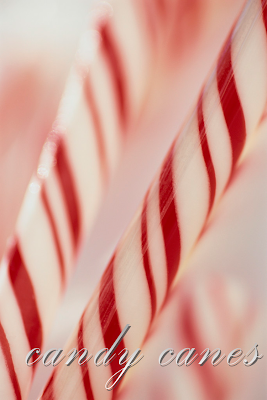
Well, we might be looking in the wrong place or under the wrong name again…but we can’t find candy canes here in town. We haven’t been looking too hard or too far yet, but were surprised not to find them readily available at Tesco or any of the little green grocers in the neighborhood. Surprise, surprise. Just another tiny cultural difference, just when we thought the holidays were virtually the same both here and at home.
It just seems so odd. No striped candy canes. No peppermint pigs, which, granted, is more of an East Coast tradition, but we don’t find anything like that even in specialty shops. We’ve been told that in the UK, peppermint is seen as medicine, so if we want something like candy canes, to look at boiled sweets for cough candy. That sounds sort of awful. There has to be a candy cane somewhere in this city that isn’t lit up on a pole in St. George’s Square. Any ideas out there?
Someone has suggested we make our own. Hm. Maybe not. Working with sugar requires a lot of space, cold counters and a tolerance for finger blisters. It’s Mac’s end of term break, too, so laziness should be the order of the day. We’ll keep looking — or else we’ll enjoy them next year. It’s funny — since candy canes are one of those things you eat only once a year, and that thoughtlessly and without much relish, it’s kind of amusing how surprised we are when we look up and can’t find them.
We’ve not been doing too much in terms of holiday anything, but now that term is over and most of the pressure is off for papers and deadlines, we’ve been experimenting with ingredients for holiday baking to share with the neighbors. Mac learned right off: treacle is not molasses. According to Mac (and I can’t taste-test this, as it’s not unsulphured), it has a strong taste that isn’t at all the same as the strong taste of molasses. Amusingly, the people who have had our “ginger biscuits” say that all they knew molasses was good for was feeding to horses.
Have you ever found dried ginger stems at an Asian market? If you ever see any, grab them. (And, possibly, pay for them.) It’s a fantastic grade of ginger, and the roots, ground in a coffee grinder, are fresher and have more bite than any of the freshest ground gingers we’ve tasted. It makes quite a fierce little ginger snap. Yum.

We’ve been asked to try a few things since we’ve been abroad — haggis being one of them, of course (have resisted valiantly!), petticoat tails, which turned out to be shortbread (Apparently, Mary, Queen of Scots had a French baker who remade the big loaves of shortbread into smaller ones, calling them Petit Gautelles, or little cakes. Sadly, none of the 16th century Scots could speak French without strangling, so Petticoat Tails they became, and so remain. Yes, hark at the history teacher, there will be a quiz on this tomorrow.), and a fairly disgusting pseudo-energy drink called Irn Bru (Allegedly the soft drink of Scotland, a bright, horrifying orange. D. had to take that bullet alone: I’m also allergic to quinine. Why would anyone put quinine in a soda? It was put into tonic water to protect gin-and-tonic swilling colonial British soldiers when they were in malarial areas; I guess it’s just habit by now. As is my lecturing in history, apparently), but one of the most dicey sounding “eat some for me while you’re there” treats we’ve been asked to seek out is Violet Crumble.
Violet Crumble. It sounds like candied flower petals, doesn’t it? A dreamy Victorian concoction both fragrant and sweet, which would be delightful and tasty and cultured. This not being Victorian times, we found out that Violet Crumble is chocolate covered spun honey.
Chocolate covered honey. It immediately reminds me of the Peanuts cartoon where Linus is happily munching on something crunchy. Lucy bossily asks him what it is. “Sugar lumps with honey!” he says happily, while Lucy gags. Chocolate covered… honey. Should we be grossed out? Has anyone else had this? Or should we take our own advice, and take the sugar rush?
































